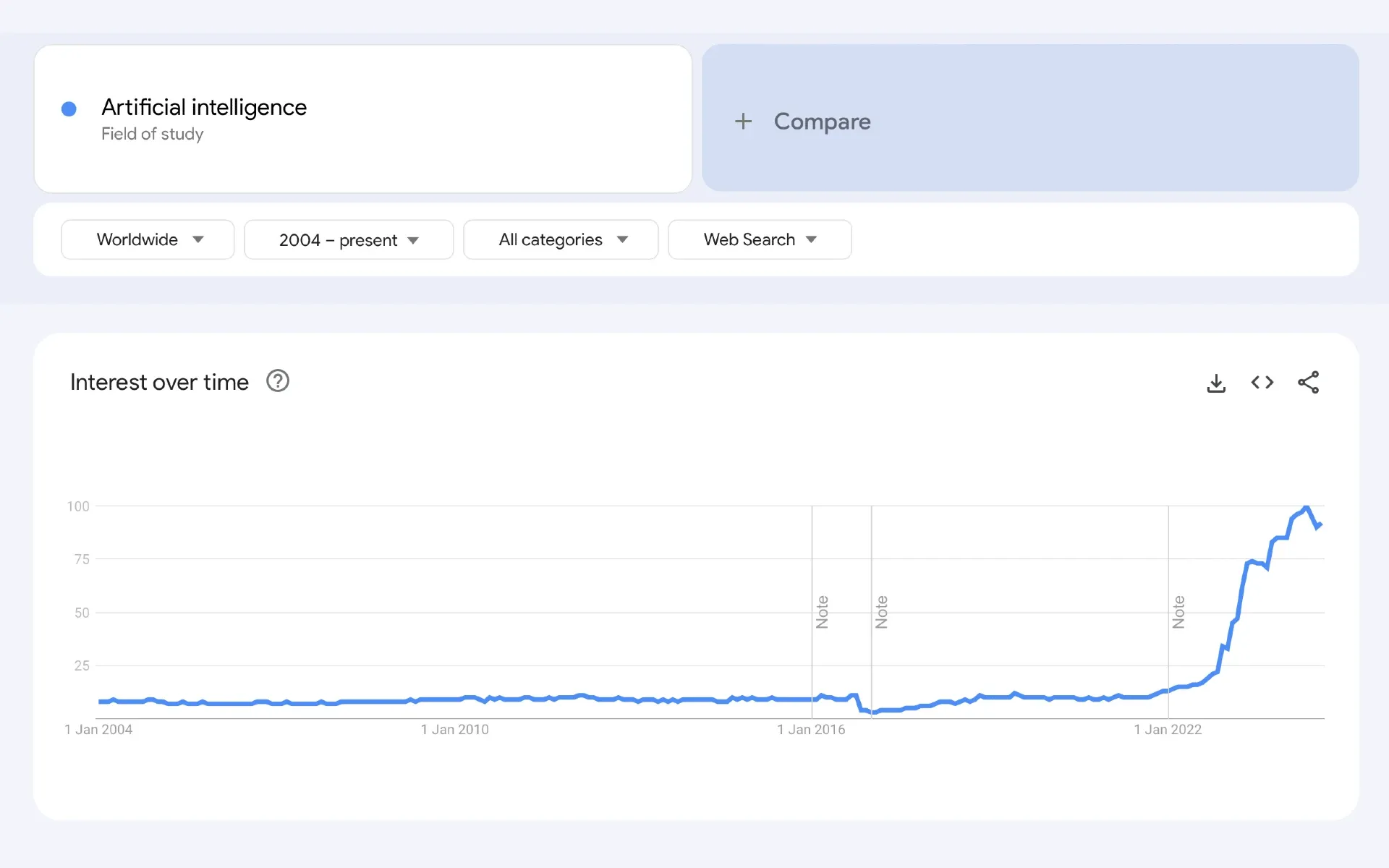Google Trends Tutorial: New insights into search behavior and topic comparison
Google's latest tutorial unveils advanced features for comparing search terms and topics across platforms.

Google this week released a comprehensive tutorial video on its Search Central YouTube channel, revealing new insights and advanced features of Google Trends. The video, presented by Daniel Waisberg, Search Advocate at Google, and Hadas Jacobi, Google Trends Engineer, offers a deep dive into how users can effectively compare search terms and topics trending on both Google Search and YouTube. This release comes at a time when understanding online search behavior has become increasingly crucial for marketers, journalists, and researchers alike.
The tutorial begins by addressing the fundamental question of why Google Trends matters in today's digital landscape. According to Waisberg, Google Trends serves as a powerful tool for uncovering emerging trends and making informed decisions based on what people are searching for online. This information can be particularly valuable for businesses looking to align their strategies with consumer interests or for researchers aiming to understand societal shifts reflected in search patterns.
One of the key features highlighted in the tutorial is the ability to compare up to five topics or search terms simultaneously. This functionality allows users to gain a more comprehensive understanding of how different subjects relate to each other in terms of search interest. Jacobi emphasizes the importance of comparing like with like, advising users to match topics with topics and search terms with search terms for the most accurate comparisons.
The tutorial delves into the technical aspects of using Google Trends, explaining the various filters available to refine searches. Users can narrow their focus by location, time period, category, and Google property (Search, Images, News, Shopping, or YouTube Search). This level of customization enables more targeted analysis, whether for regional trends or platform-specific insights.

A particularly intriguing feature discussed is the ability to leave the search term field blank and manipulate the filters. This reverse approach, as Waisberg describes it, allows users to discover the most common search topics and queries for specific parameters without preconceived notions. This method can be especially useful for identifying trending topics in a given region or time frame that might not have been apparent otherwise.
The video provides a detailed explanation of the charts and visualizations available in Google Trends. The main line chart displays search interest over time for the selected terms or topics, with peaks and valleys representing fluctuations in interest. A complementary bar chart offers a high-level comparison of average search interest across the terms. Jacobi points out that these visualizations can help identify seasonal trends, news events, and other factors influencing search behavior.
An important technical consideration highlighted in the tutorial is the issue of data sampling. Jacobi warns that charts with frequent drops to zero often indicate insufficient sample size for reliable analysis. In such cases, users are advised to broaden their search parameters or consider alternative terms to ensure meaningful results.
The tutorial also covers the various cards available below the main chart, including regional breakdowns and related topics and queries. These features provide additional context and depth to the analysis, allowing users to understand geographical variations in search interest and identify related subjects that might be worth exploring.
A significant portion of the video is dedicated to explaining how to interpret the data presented in Google Trends. Waisberg emphasizes that the numbers shown represent relative search interest rather than absolute search volumes. This normalized index, where 100 represents the peak search interest for a given term in the specified time frame, allows for fair comparisons across terms with vastly different search volumes.
The presenters also address the distinction between "rising" and "top" related topics and queries. Rising topics or queries have seen the largest increase in search frequency since the previous time period, while top ones have the highest overall search volume. This differentiation can help users identify both emerging trends and consistently popular subjects.
Towards the end of the tutorial, Waisberg stresses the importance of accurate reporting when using Google Trends data. He advises against making definitive statements about absolute growth in search volume, recommending instead that users frame their findings as approximations of increases in search interest.
The release of this tutorial video comes at a time when digital marketing strategies are increasingly data-driven, and understanding search behavior has become a critical component of market research. By providing a comprehensive guide to its Trends tool, Google is empowering users across various fields to make more informed decisions based on search data.
It's worth noting that while Google Trends offers valuable insights, it should be used in conjunction with other research methods for a comprehensive understanding of any topic or market. The tool's limitations, such as its reliance on relative rather than absolute numbers, should be kept in mind when drawing conclusions from the data.
As search patterns continue to evolve and reflect changing societal interests and concerns, tools like Google Trends are likely to play an increasingly important role in business strategy, academic research, and journalism. This latest tutorial from Google represents a significant step in making these insights more accessible and understandable to a wider audience.
Key facts about the Google Trends tutorial
Released on August 14, 2024
Presented by Daniel Waisberg and Hadas Jacobi from Google
Covers comparison of up to five topics or search terms
Explains filters for location, time period, category, and Google property
Demonstrates charts showing search interest over time and average interest
Discusses regional breakdowns and related topics/queries features
Emphasizes the importance of data sampling and proper interpretation
Highlights the distinction between rising and top related topics/queries
Stresses the need for accurate reporting of Google Trends data


